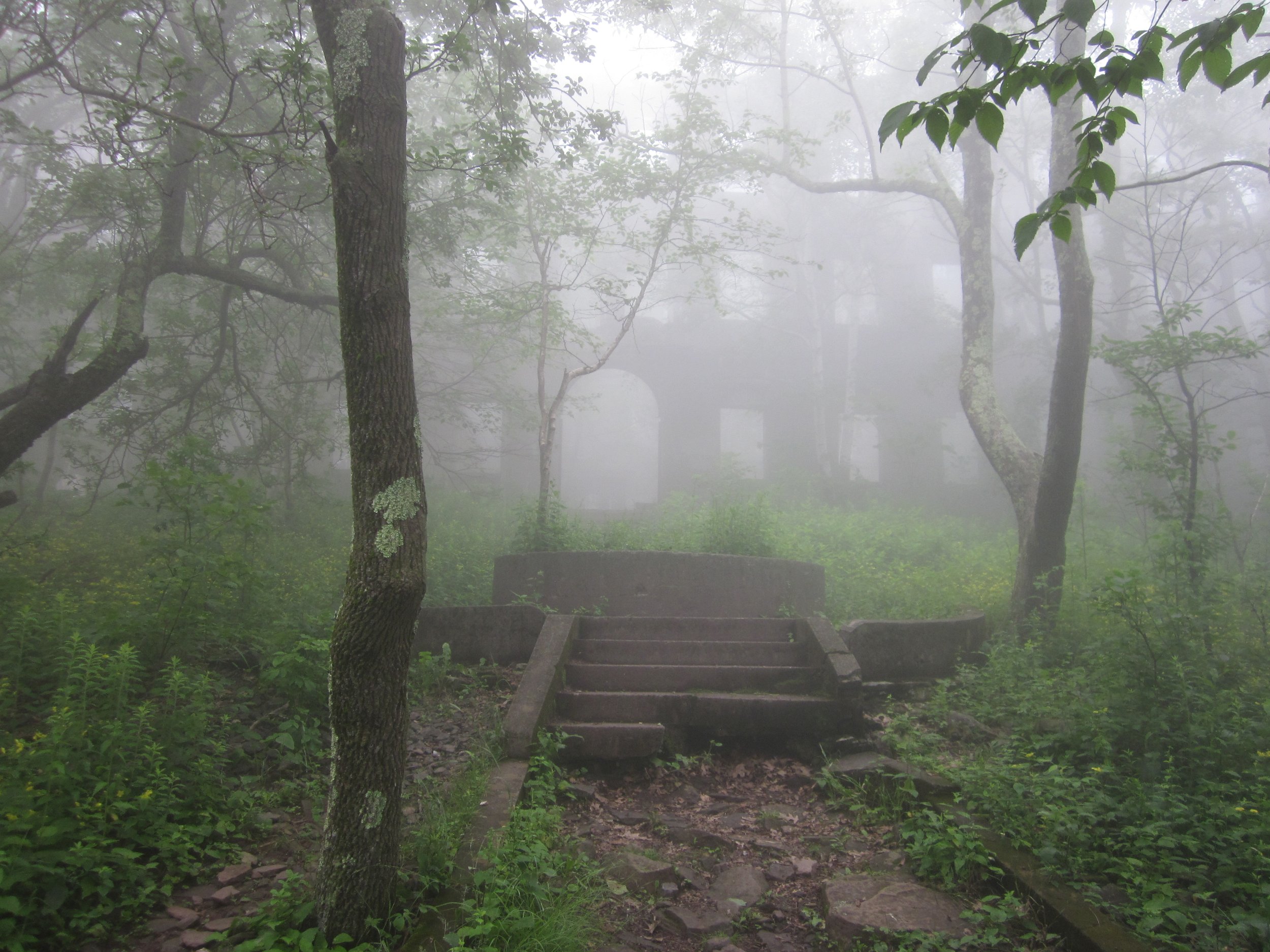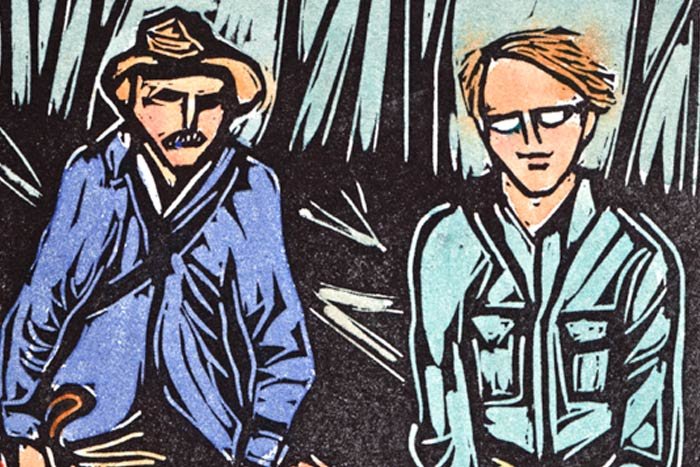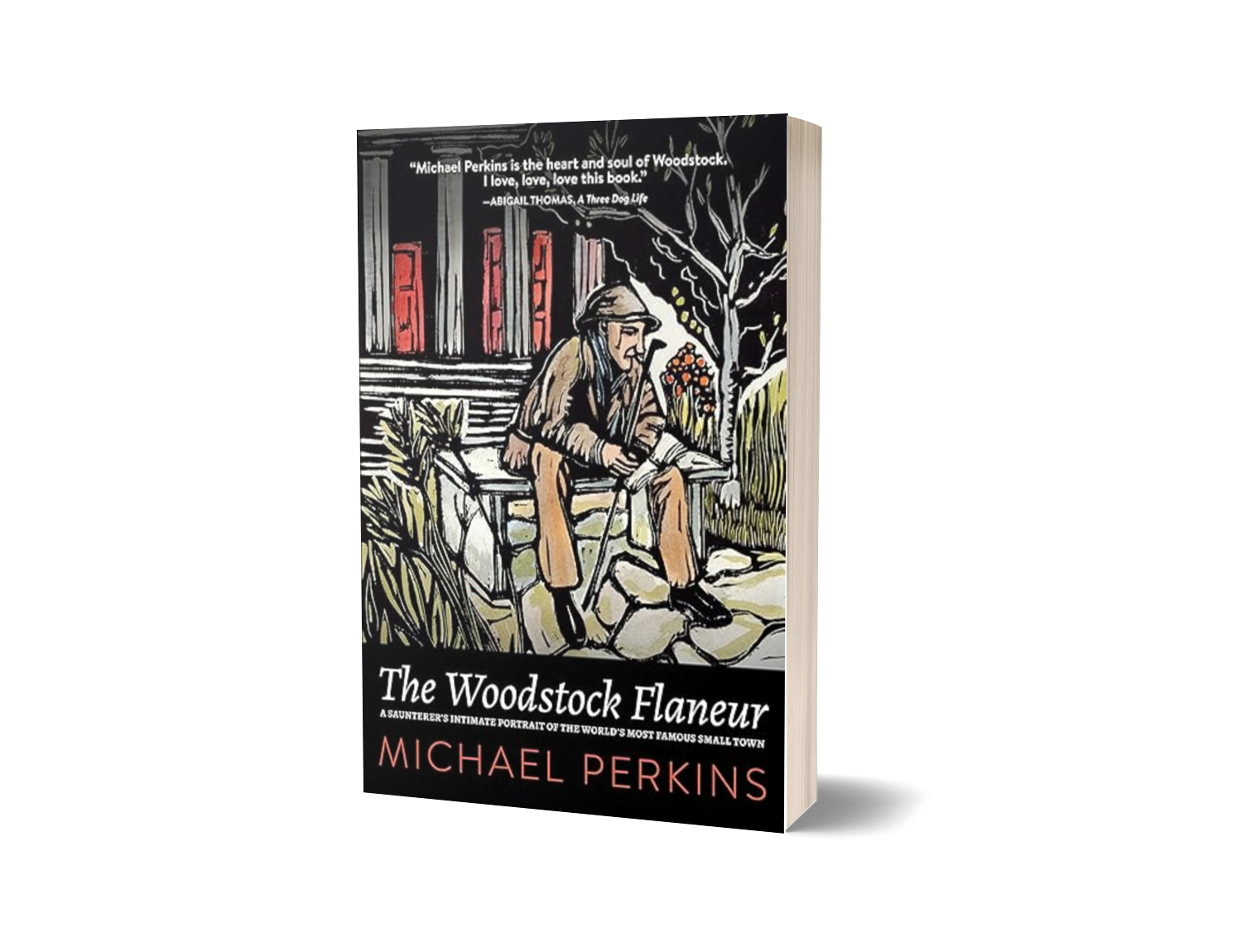
Our story begins on a butterfly walk up Overlook Mountain

At the hotel ruins, I shared my favorite literary anecdote about Woodstock in which Hart Crane, a rambunctious young poet in the early 1920s on an extended visit to the town from his struggles in Manhattan, had the fantasy of becoming the hotel caretaker through the winter. To hell with the "prostitutions" of the city, as he called his copy writing jobs. At the old hotel he'd have "a beautiful view...though the only company would be the cow, the two horses, and the chickens."
-
As he wrote to a friend, "I'm strongly tempted and would like to try out Loneliness and hurricanes and drifts at the pleasant risk of only monthly or bi-monthly visits to the nether world of common speech."
I confess I grew up on my own fantasies of holing up in a fire tower (Kerouac), a cabin (Thoreau), or a desert ranger station (Edward Abbey), an outpost to commune with the the wind and stars as I composed my words purified by the wilds. (In fact, I did quit Manhattan to live in a Catskills log cabin for a time.) I was also fascinated by Hart Crane because I imagined him as a family ancestor in a round-about way. a famous figure whose life had some parallels to mine. My ex-wife's family, a literary clan on the Upper West Side, included a great uncle who'd been a poetry buddy of Hart Crane's in both Greenwich Village and the country. In memoirs and biographies I loved reading about their escapades on visits to Woodstock, a bohemian outpost of artist, dirt roads, hard cider, and cold winters.
"Hart Crane!" announced our walk leader, a rather remarkable guy himself. A Czech emigre, a retired aerospace engineer from Long Island with dozens of patents to his name, an avid outdoorsman, he'd moved to Woodstock in his seventies after his marriage collapsed and seemed determined to do it all. An expert birder, he was now mastering butterflies.
"Hart Crane," he said. "America's greatest poet!"
Now, it's a rare treat to meet a fellow Crane enthusiast. To many, even to me, Crane's poetry is impossible to understand if read as straightforward English. It's too dense, too complex. Shakespeare after a car wreck. So I approach it as a reinvented version of English driven by ecstatic visions. I find it thrilling even if I can't paraphrase its meanings. To Harold Blood, the famous Yale professor, he was one of the greats. To others, a blowhard. (I'm with the greats, but, as I say, he's like family.) His most ambitious effort was an epic poem inspired by the Brooklyn Bridge, "The Bridge." But he led a tempestuous life riven by alcoholism and torment over being gay, and at thirty-two he committed suicide by jumping off a ship bound from Cuba to Manhattan, one of poetry's famous suicides. That's why I treasured anecdotes about his happy days in Woodstock invigorated by chopping fire wood and walking country lanes. What if he'd stayed ? Become a Woodstocker settled and content? I, myself, had quit the city for good and prospered.
To celebrate, our leader organized a wine and cheese and poetry evening for Hart Crane fans in Woodstock. There turned out to be three of us. The third was Michael Perkins, whom I knew in passing as a poet and as a host for library events. As a young poet from Ohio (Crane came from Ohio) living in the East Village in the 1960s, Michael had marched across the Brooklyn Bridge reciting "The Bridge" to anyone who'd listen. More recently, he'd written a short play for the Woodstock historical society about Crane's Thanksgiving bacchanal with friends not long before he'd hiked up Overlook to fancy a winter of solitude. Michael was a great walker, himself, regularly seen trooping over Ohayo Mountain on his four mile commute to the library, a tall man with a slight stoop and a walking stick, a stubborn reminder of life before cars. Perhaps it was inevitable that we met. I , myself, had done lots of peak bagging--the Catskills 3500 Club peaks, the Adirondack 46ers--so I was ripe for a fresh adventure. After enough wine and poetry, the two of us hatched the idea of walking across Woodstock together. Almost as an afterthought he suggested we write about it for the Woodstock Times.
Over the next few years we found further challenges for our "Walking Woodstock" columns. In John Cheever's short short "The Swimmer," the gin-drinking protagonist decides to return home from an afternoon pool party via the swimming pools strung across Westchester. We stuck to water bottles, but circled town via Woodstock Land Conservancy properties. In the dead of winter we joined the mall walkers down in Kingston. Michael resurrected a piece from 1986 about honoring out town's bicentennial by taking a four-day trek on foot from our Village Green to Woodstock, Connecticut. I shared the harrowing story of getting lost on a solo bushwhack one winter day when my compass started pointing me one-hundred-and-eighty degrees the wrong way. Together we searched out lost quarry roads, dug up old stories about witches, reported whatever caught our fancy. I tried to start the rumor that Cooper Lake had its own whale, convinced that Woodstock needed a new folk tale.
We assembled all of this into a book, Walking Woodstock: Journeys into the Wild Heart of America's Most Famous Small Town. Our cover artist, Carol Zaloom, a master of linocuts, designed a logo for Bushwhack Books, a rustic compass. On the first Sunday in December in 2009 we had our book launch at a local art gallery. We invited musicians to perform for a "Foot Stompin' Party Celebratin' Walkin' Woodstock" with high hopes, but, really, we had no idea what was in store. Our column had run month after month with an occasional nasty letter-to-the-editor denouncing us for trespassing or denigrating perfectly nice houses. (Guilty on both counts, I guess, but what's the point of living in Woodstock if you can't insult the shiny showpieces climbing the hillsides.) A few dozen fans would have pleased us. Instead, a mob arrived. The line for signed copies stretched out the door. For two hours, Michael and I felt like Stephen King, meeting an endless string of readers who'd followed our columns and now shared stories of their own favorite walks in the woods. It turned out we'd stumbled upon the town's most popular, least publicized form of outdoor pleasure. By the end of the month Walking Woodstock had become the #1 paperback bestseller for the year at our local independent bookstore.
After a start like that Bushwhack Books had nowhere to go but into a future of more and more books about Woodstock and what it has inspired.
crossing divides
My Journey to Standing Rock, by Vernon Benjamin
Catalogue
the pocket guide to woodstock
by Will Nixon
the woodstock flaneur
A Saunterer’s Intimate Portrait of the World’s Most Famous Small Town, by Michael Perkins
Walking Woodstock
Journeys into the Wild Heart of America’s Most Famous Small Town, by Michael Perkins & Will Nixon
Acrostic Woodstock
Poems by Will Nixon
Swami Salami
The Best of the Beloved Woodstock Times Cartoons, by Michael Esposito
IF NOT IN HEAVEN, THEN IN SAUGERTIES
Poems by Will Nixon
time under the overlook
Poems by Guy Reed

stay in touch
Photo bottom: Michael Perkins (L) & Will Nixon (R), founders of Bushwhack Books. Linoprint by Carol Zaloom.
©Bushwhack Books, 2024
Photo top: Mister.ev, CC BY-SA 4.0, Photo middle: Glarkin53, CC BY 3.0, via Wikimedia Commons









